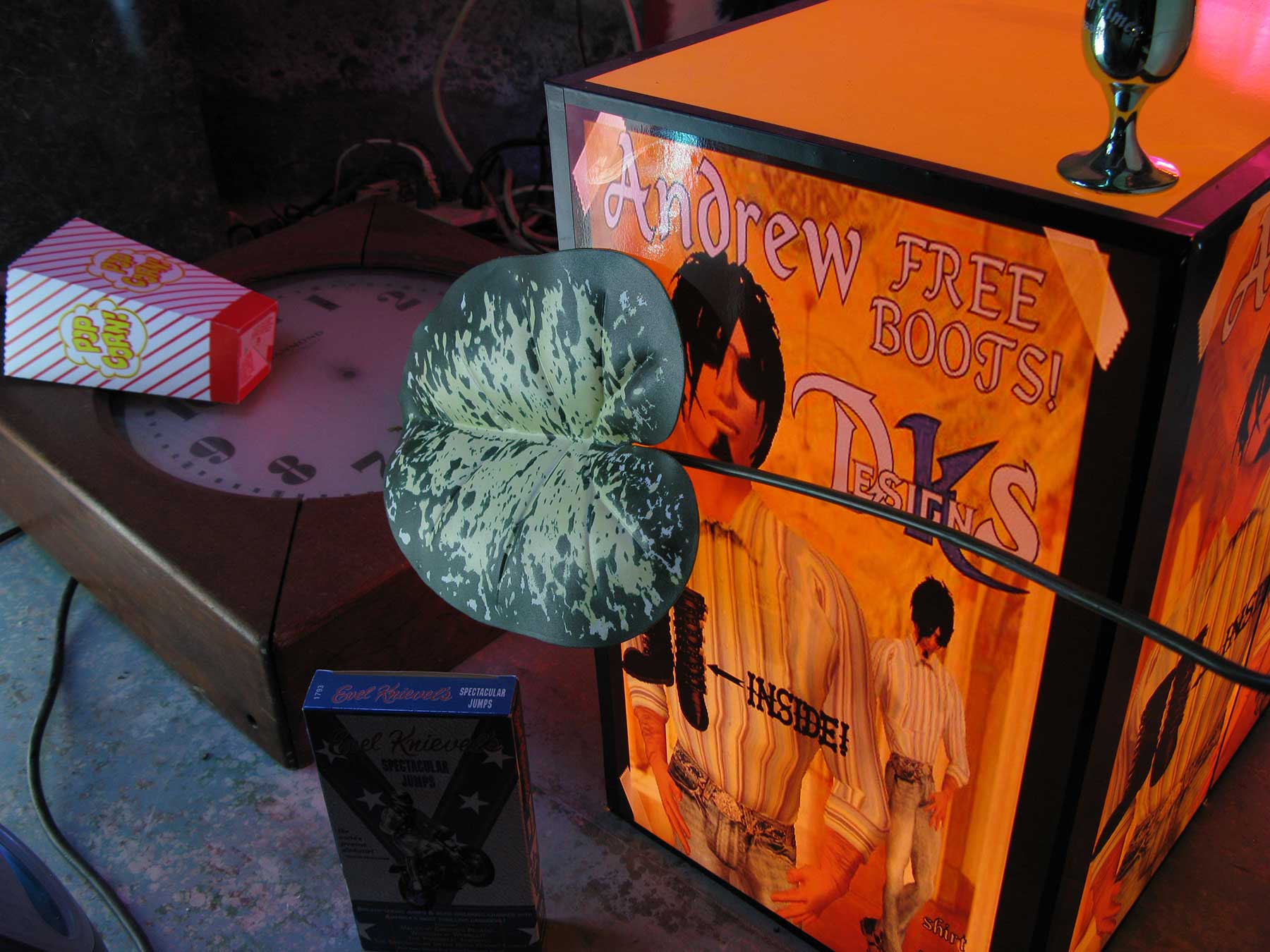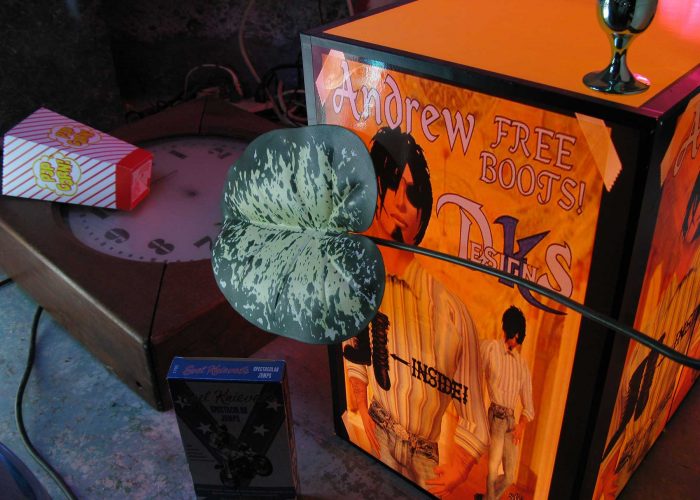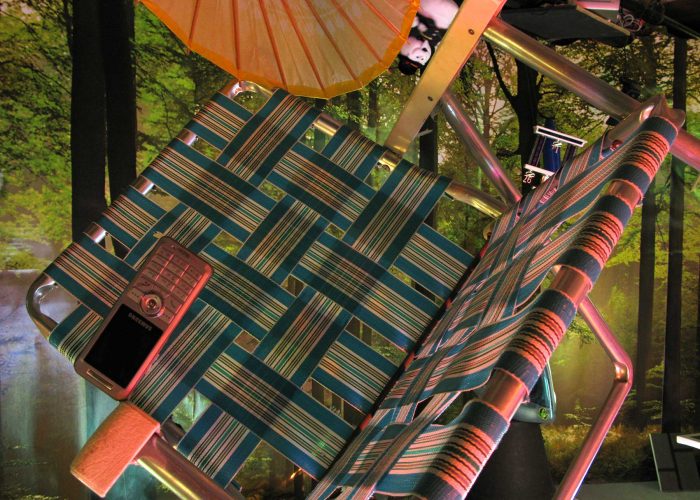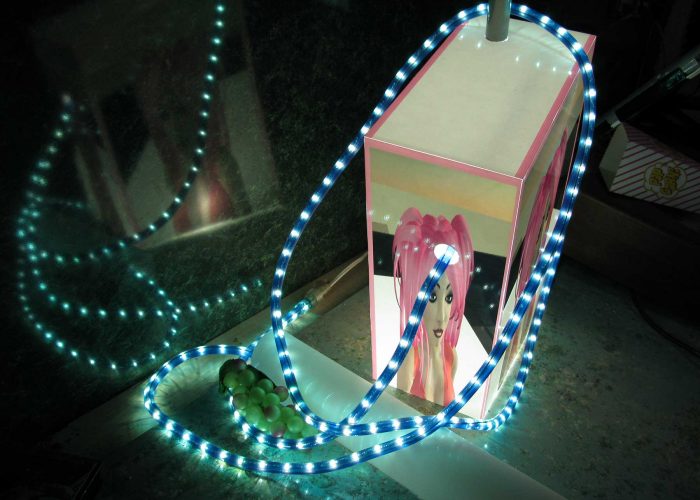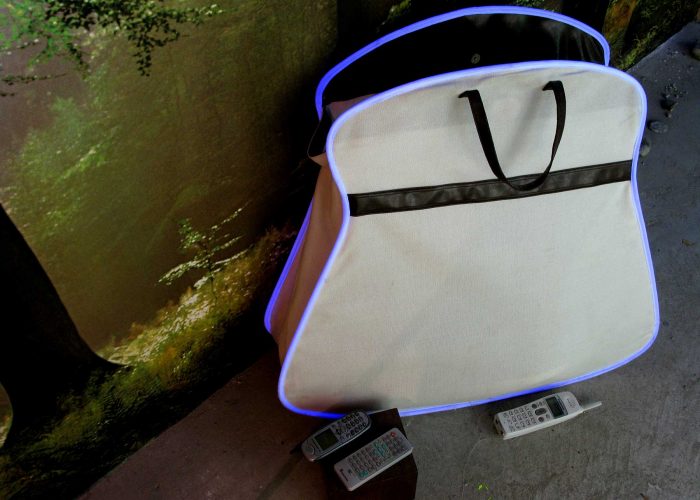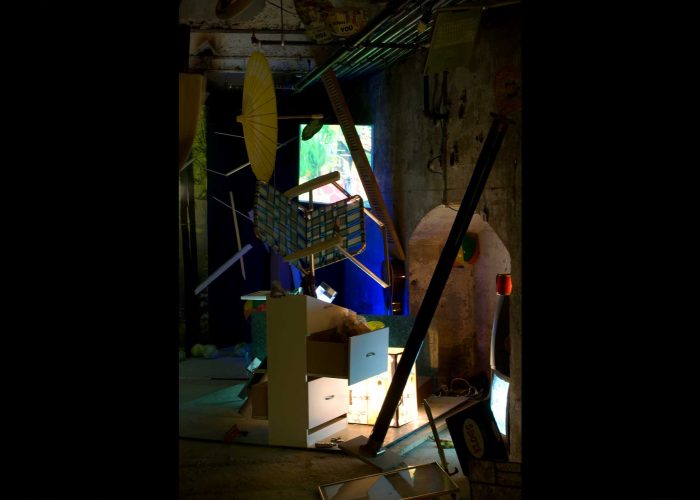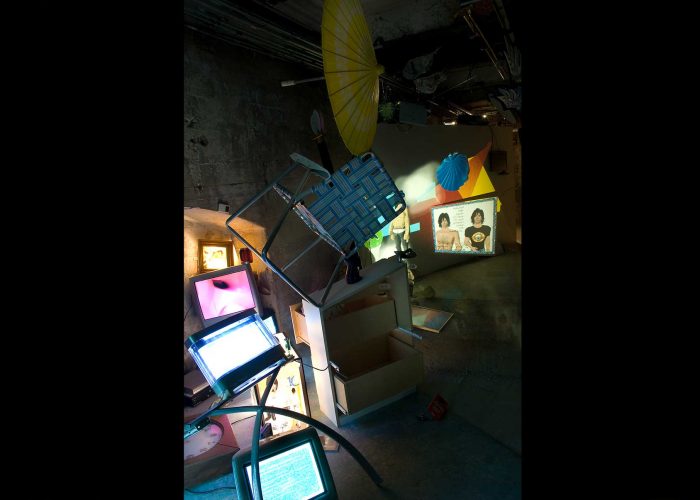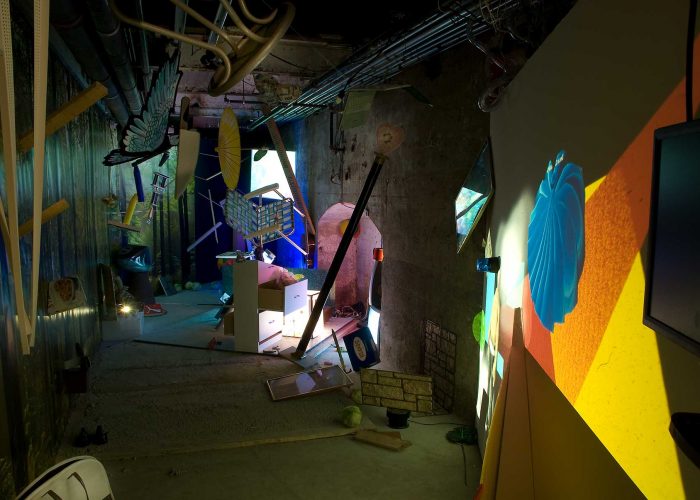Sculpture Center, NY as part of Degrees of Remove
organized by Sarina Basta and Fionn Meade, September 7 – November 30, 2008
dump managed by: Anthony Miler
RL Dumpster installations in galleries and museum spaces were an extension of our online project “Second Life Dumpster.” We used these public dumpsters to learn more about the relationship between and object based art production and consumerism, ideas of “market value,” actual strategies of object recycling and creating a participatory public sculpture. For the installment of these dumps we sent curators and museum staff a set of general guidelines that laid out how to assemble a RL Dumpster in their exhibition spaces. The guidelines were shaped by our experience of having maintained a virtual public dumpster for one year in Second Life, and mainly concerned the collection (source from as many people as possible,) the kind (clean, colorful consumer objects and glossy packaging) and installment (try to ignore the notion of gravity and weight) of trash objects. As a reference, the installations also included video clips that showed the process of virtually decaying objects on the SL Dumpster. To get feedback on the process we invited RL Dump Managers to send us a dump report.
Dumpster Report
On Monday, September 15, 2008 9:54:08 AM Anthony Miler wrote:
In terms of what informed certain decisions in the actual process of installing a dumpster version it was like a mimicking or translating. I only thought of thatbecause you had mentioned before that you had been reading the task of the translator, so of course I also went and read it too. So often my decisions seemed to me very general, and not relying so much on a positive correlation with the Second Life Dumpster, but not having negative correlations, or having as few as possible. Since there were pretty hefty time constraints I knew size distortion couldn’t be used much if at all, so I didn’t bother, but was happy there did exist a couple of these elements (the big bag and little shoes). My only positive correlations were to attempt a mimick of weightlessness, and the strange wierdness of empty taste (simulations which often seem to deny or not comprehend the original function) of second life. And to create a weird, atypical space.
Those are kind of some unedited memory/thinking of decisions, but so I also have an entry in my journal which follows below. Please forgive any notion of corniness though. When I write whatever I want it always bends toward learning and attempts at self-awareness, and gratefulness in the setting of those two things…
I enjoy the multiplicity of views, where everything is right, so nothing is singlar, at least without itself being conscious of it, so also outside of it, or not quite singular, just another possibility… So when one looks at the dumpster project with some distance, and perhaps less the context of knowing all about second life than a general knowledge of art discourse or history, institutions etc… then it is interesting that someone found the opportunity to place a garbage dump
as an art project within an institution.
It’s like entering into the rhetorical game, placing that there as a sign or door. And yes, alternative spaces are very much institutionalized, they present themselves that way, and I will not be convinced by the so called “down to earth” people working there, that it isn’t an institution. So there it is, a garbage dump, or a simulation of one. But only with remove, or by extension through choosing to interpret signs, or also by choosing to remain ignorant of the project, that is only the first moment of my encounter. Nevertheless, that rests, or can rest, as an experience, that bit of a notion of singularity. And so even then, that small bit is “right.” (?) Entering into the project (learning about it) one sees it is a complex and layered thing almost like an organism. Clarity often totally escapes me, but the environment doesn’t seem to ask for it anyway, it seems much more about observation as a throughway toward creation, without creation being that important anyway because that is a given. It seems like some sort of an orchestration of interacting with other people in many different shades of simulation. Often times I find myself questioning the limits of authenticity and simulation, and where they may cross in ways where separating or contemplating the two may miss the point entirely. I ultimately kept being drawn back to the idea in various circles of thought spurred by the project, that to me its aboutness was its effect on me, which was self-examination and learning, the type of things that come about when one critically examines their perceptions and presuppositions. And as far as projects go, if they effect me in such a way that I actively learn, then it really becomes a part of me, and I am thankful to be a part of the discourse in that way.
